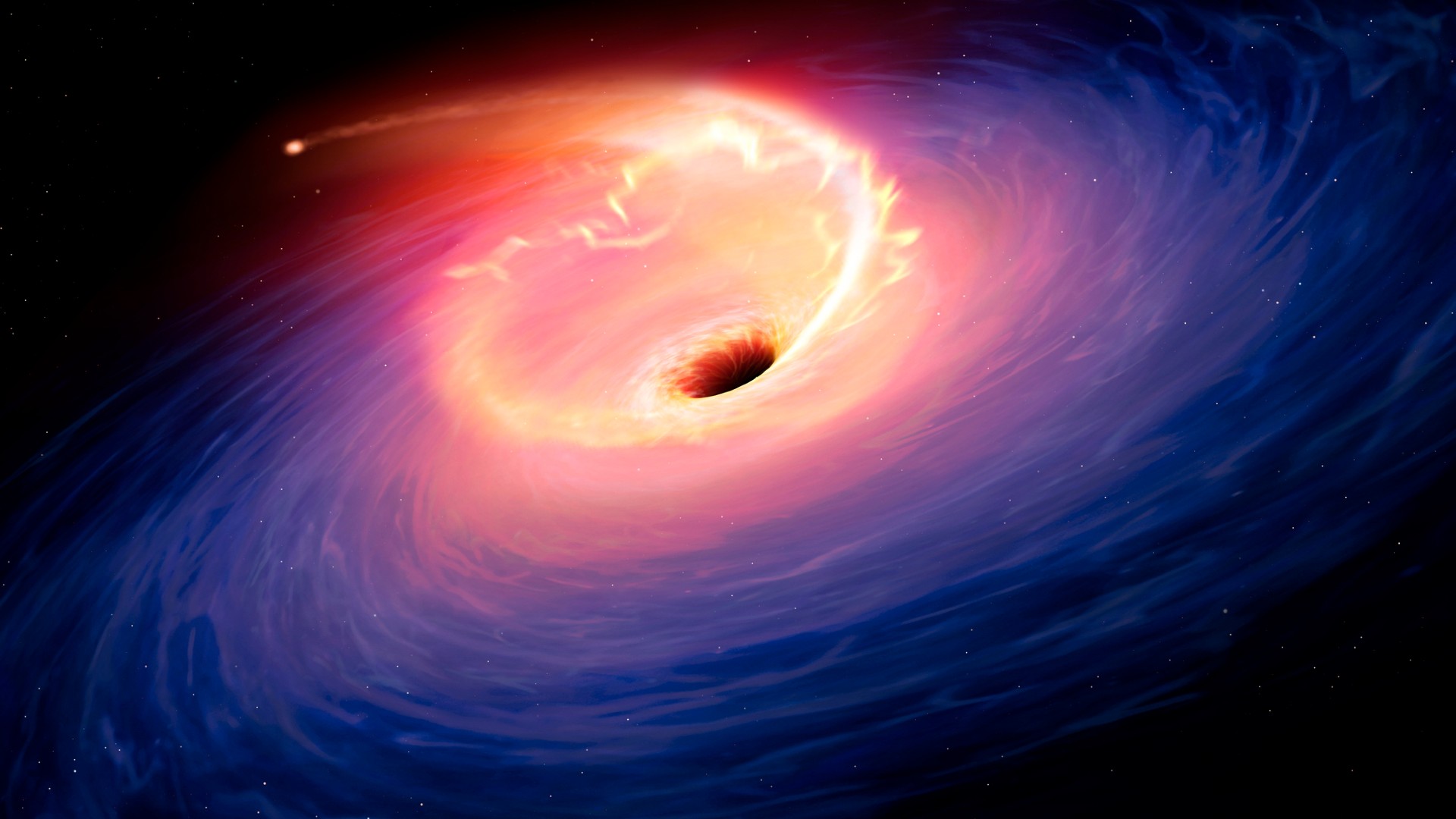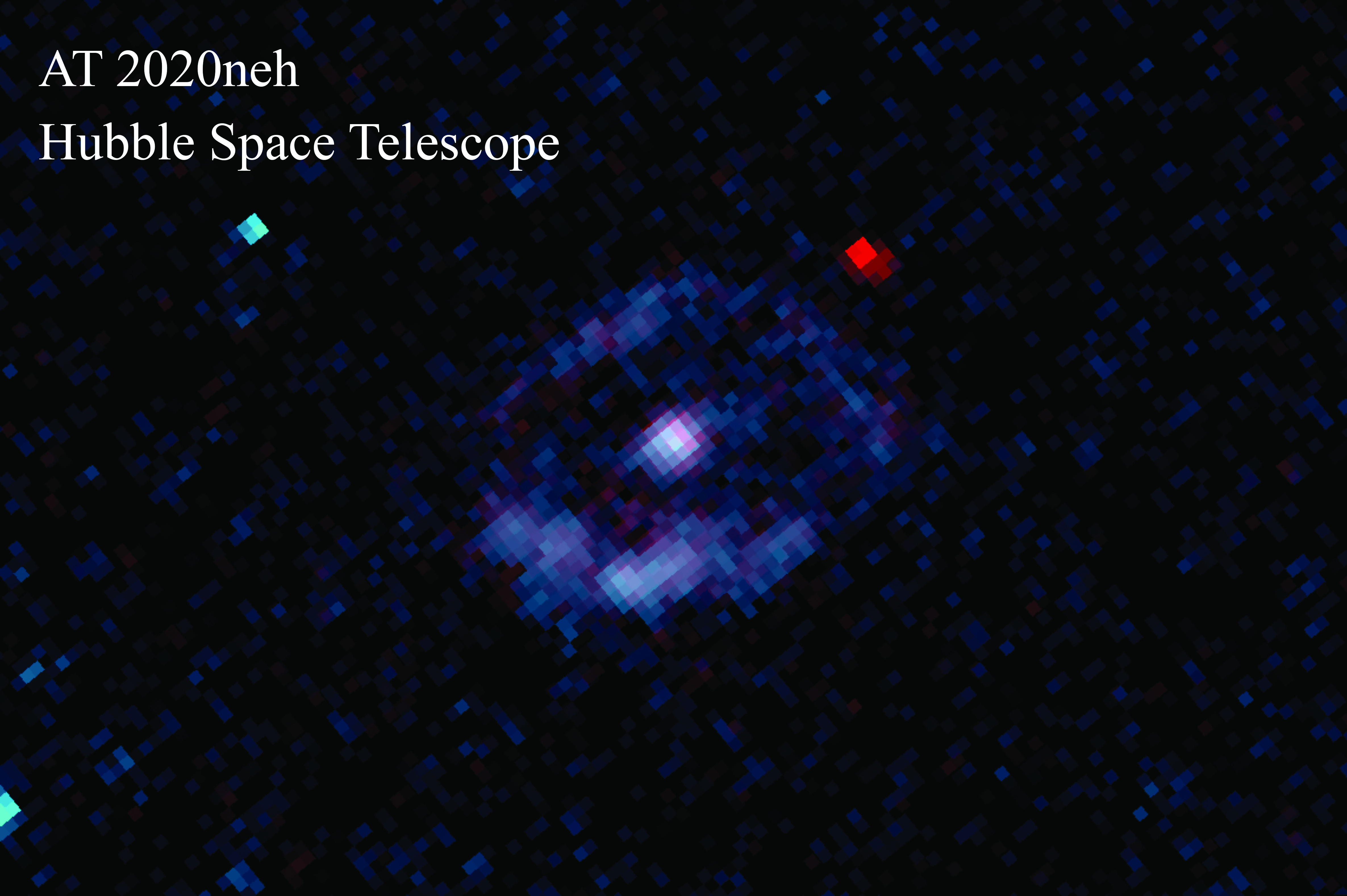Black hole announces itself to astronomers by violently ripping apart a star
The black hole is located in a dwarf galaxy a million light-years away and ripped apart an unlucky star in a brutal tidal disruption event.

A hitherto undiscovered black hole announced its presence to astronomers when it ripped apart and devoured a star that wandered too close to it.
The intermediate-mass black hole located in a dwarf galaxy a million light-years from Earth shredded the star in an occurrence that astronomers call a Tidal Disruption Event (TDE). The TDE made itself visible when it blasted out a flare of radiation so powerful that it briefly outshone every star in its dwarf galaxy home combined.
This TDE could help scientists better understand the relationship between galaxies and the black holes within them. It also provides astronomers with another intermediate black hole to study. "This discovery has created widespread excitement because we can use tidal disruption events not only to find more intermediate-mass black holes in quiet dwarf galaxies but also to measure their masses," research co-author and UC Santa Cruz (UCSC) astronomer Ryan Foley said in a statement.
Related: Black hole is 'burping out' a 'spaghettified' star it devoured years ago
The TDE flare — designated AT 2020neh — was first observed by astronomers using the Young Supernova Experiment (YSE), an astronomical survey that detects short-lived cosmic events like supernova explosions, as the black hole first began to devour the star.
The observation of this initial moment of destruction was vital in allowing an international team led by UCSC scientists and research first author and Niels Bohr Institute astronomer Charlotte Angus to measure the mass of the black hole finding it to be around between around 100,000 and 1 million times the mass of the sun.
TDEs have been successfully used to measure the mass of supermassive black holes in the past, but this is the first time they have been shown to work in documenting the masses of smaller midsized intermediate-mass black holes.
Get the Space.com Newsletter
Breaking space news, the latest updates on rocket launches, skywatching events and more!
That means that the initial sighting of the incredibly fast AT 2020neh flare could provide a baseline for measuring midsized black hole masses in the future.
"The fact that we were able to capture this midsize black hole whilst it devoured a star offered us a remarkable opportunity to detect what otherwise would have been hidden from us," Angus said. "What is more, we can use the properties of the flare itself to better understand this elusive group of middle-weight black holes, which could account for the majority of black holes in the centers of galaxies."

This midsized class of black holes have a mass range of between 100 and 100,000 times that of the sun, making them significantly more massive than stellar-mass black holes but much smaller than the supermassive black holes that sit at the heart of most galaxies, including the Milky Way.
Physicists have long suspected that supermassive black holes, which can have masses as great as millions or even billions of times that of the sun, could grow to these tremendous masses grow as the result of the merger of intermediate-mass black holes.
One theory regarding the mechanism that could facilitate this growth suggests the early universe was rich with dwarf galaxies possessing intermediate black holes.
As these dwarf galaxies merged or were swallowed by larger galaxies the intermediate black holes within them cannibalized each other, thus growing in mass. This chain process of increasingly larger mergers would eventually lead to the supermassive black hole titans that sit at the heart of most galaxies today.
"If we can understand the population of intermediate-mass black holes out there — how many there are and where they are located — we can help determine if our theories of supermassive black hole formation are correct," co-author and UCSC professor of astronomy and astrophysics, Enrico Ramirez-Ruiz said.
One question that remains regarding this theory of black hole growth is do all dwarf galaxies have their own intermediate-mass black hole. This is difficult to answer because as black holes trap light behind an outer boundary called the event horizon, they are effectively invisible unless they are feeding on surrounding gas and dust, or if they are ripping up stars in TDEs.
Astronomers can use other methods such as looking at the gravitational influence of stars that orbit them to infer the presence of black holes. These detection methods are currently not sensitive enough to be applied to distant black holes in the centers of dwarf galaxies, however.
As a result, few intermediate-mass black holes have been tracked down to dwarf galaxies. That means by detecting and measuring mid-sized black holes TDE flares like AT 2020neh could be a vital tool in settling the debate surrounding supermassive black hole growth.
The team's research was published on Nov. 10 in the journal Nature Astronomy.
Follow us on Twitter @Spacedotcom or on Facebook.
Join our Space Forums to keep talking space on the latest missions, night sky and more! And if you have a news tip, correction or comment, let us know at: community@space.com.

Robert Lea is a science journalist in the U.K. whose articles have been published in Physics World, New Scientist, Astronomy Magazine, All About Space, Newsweek and ZME Science. He also writes about science communication for Elsevier and the European Journal of Physics. Rob holds a bachelor of science degree in physics and astronomy from the U.K.’s Open University. Follow him on Twitter @sciencef1rst.









